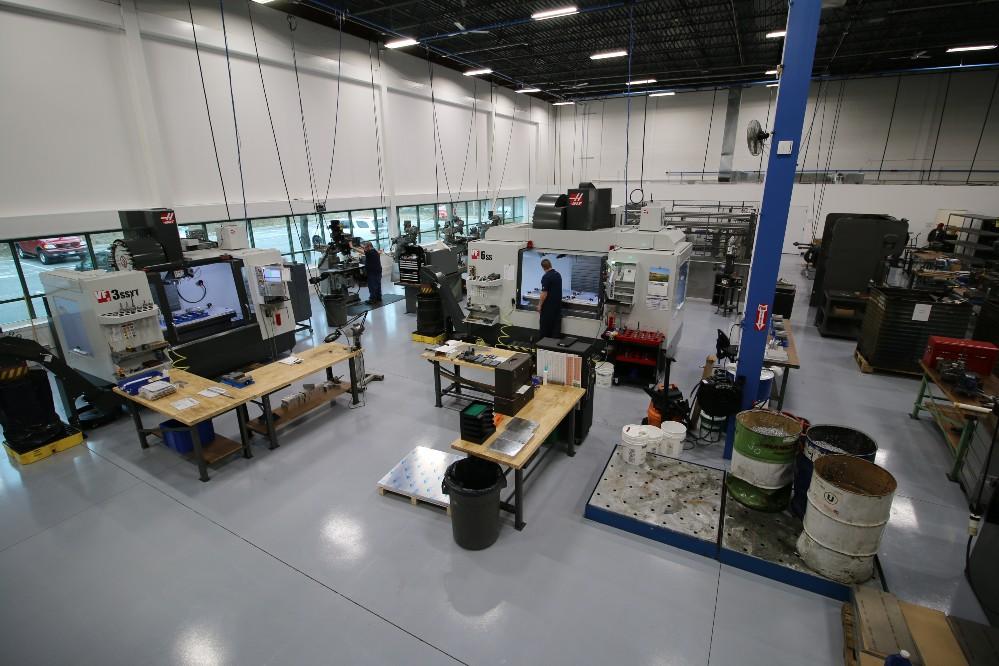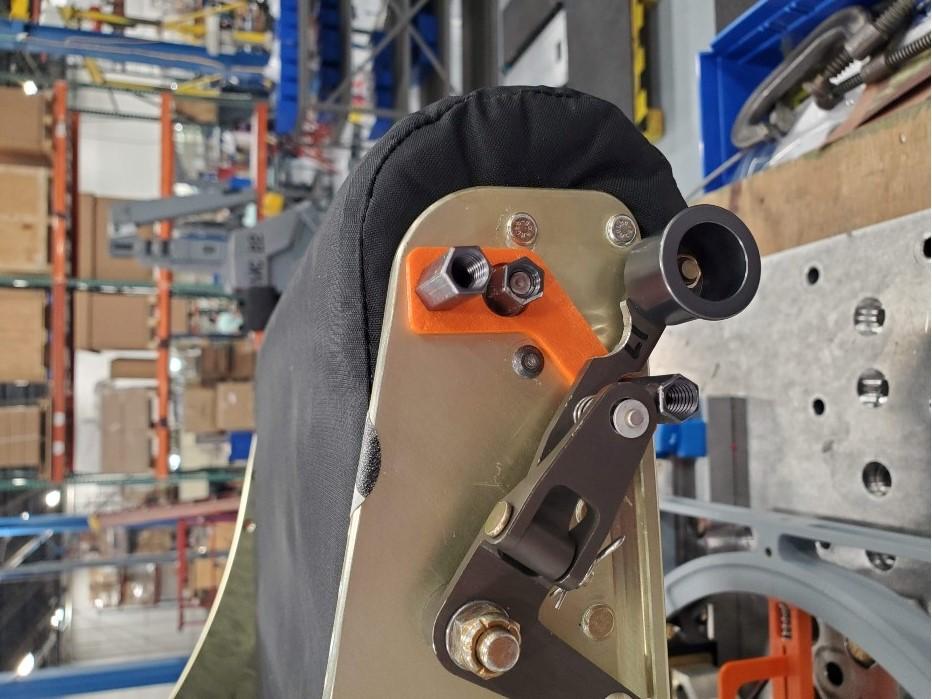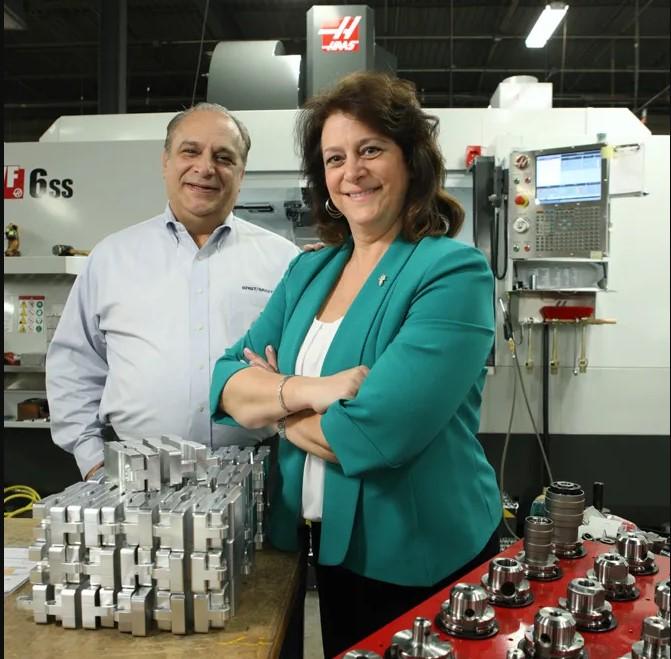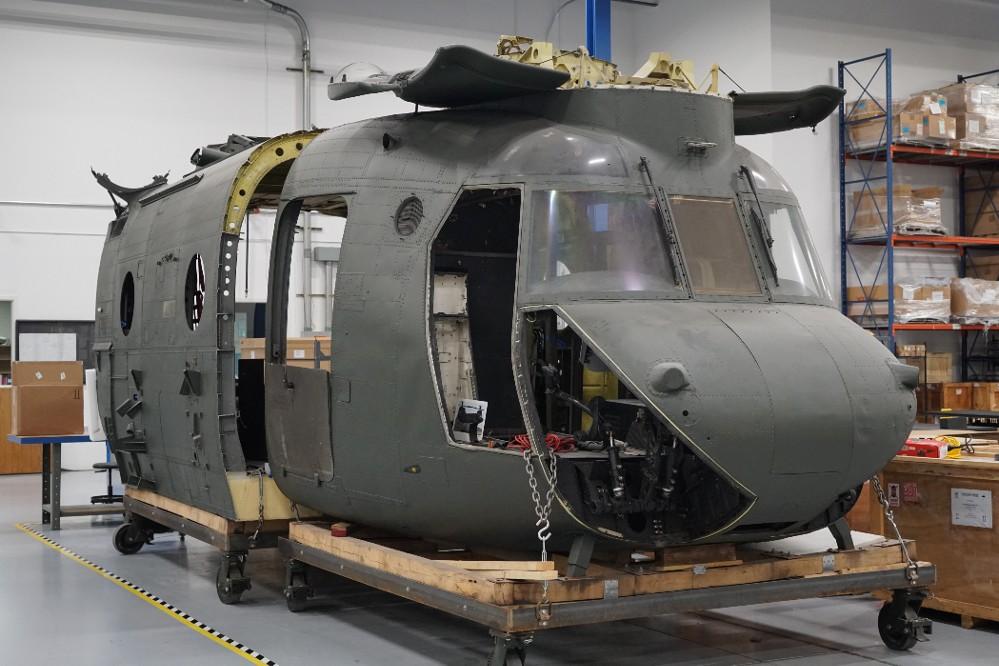- FMA
- The Fabricator
- FABTECH
- Canadian Metalworking
Our Publications
Categories
- Additive Manufacturing
- Aluminum Welding
- Arc Welding
- Assembly and Joining
- Automation and Robotics
- Bending and Forming
- Consumables
- Cutting and Weld Prep
- Electric Vehicles
- En Español
- Finishing
- Hydroforming
- Laser Cutting
- Laser Welding
- Machining
- Manufacturing Software
- Materials Handling
- Metals/Materials
- Oxyfuel Cutting
- Plasma Cutting
- Power Tools
- Punching and Other Holemaking
- Roll Forming
- Safety
- Sawing
- Shearing
- Shop Management
- Testing and Measuring
- Tube and Pipe Fabrication
- Tube and Pipe Production
- Waterjet Cutting
Industry Directory
Webcasts
Podcasts
FAB 40
Advertise
Subscribe
Account Login
Search
Adding additive manufacturing to the mix
Longtime aerospace manufacturer talks about integrating 3D printing into its processes
- By Kip Hanson
- Updated July 1, 2022
- July 1, 2022
- Article
- Additive Manufacturing

A bird’s-eye view of the production floor at East/West Industries. In the past few years, the Ronkonkoma, N.Y., company has nearly doubled its production capacity.
“When people have to use our products, they’re having a very bad day. It’s quite often their last chance to get home safely.” That’s how Mike Vetter described the importance of his and his 84 colleagues’ work at aerospace manufacturer East/West Industries Inc., Ronkonkoma, N.Y.
The woman-owned company is a prime contractor to Sikorsky Aircraft, Boeing, Northrop Grumman, and others, as well as all branches of the Department of Defense. Its mission: to design, develop, and manufacture escape, life support, seating, and ground-support equipment.
Well-Equipped
Vetter has worked at East/West since graduating from Rutgers University in 2005 with a degree in mechanical engineering. He now serves as senior director of product development for the 54-year-old manufacturing company. It’s a big job, but one that’s become a bit easier and much more flexible of late.
That’s largely because since 2017 East/West has nearly doubled its floor space, to 75,000 sq. ft.; increased its manufacturing capabilities; and purchased its second FDM (fused deposition modeling)-style 3D printer, a Fortus 450MC from Stratasys.
“We bought our first printer, a Fortus 250, in 2015,” he said. “Until then, we’d been using Bridgeports and other manual machine tools to do all of our prototyping. But with lead times growing and increased demand from several new programs, we needed a way to get products out more quickly. 3D printing was the logical choice.” (In late June, the company traded in the 250 for a Stratasys 370 FDM.—Ed.)
The manual machines, which are still on the shop floor, have been joined by several 4-axis CNC machining centers. East/West also has sheet metal fabrication and welding equipment; heavy-duty sewing machines, used for military work; a well-equipped assembly area, including a clean room and various test systems; and a CMM. The company doesn’t paint products because of Long Island’s tight EPA restrictions.“One of our organizational priorities is doing as much as possible in-house, so that if an urgent customer need arises, we can meet it quickly.” – Mike Vetter
Of special interest to helicopter buffs is a nearly complete CH-47 fuselage that East/West uses for fit checks and product testing.
“One of our organizational priorities is doing as much as possible in-house so that if an urgent customer need arises we can meet it quickly,” said Vetter.
Airtight Processes
He added that a digital manufacturing strategy is one of the most effective ways to meet customer needs. Investment in 3D printing is clearly part of the plan, but so was East/West’s implementation of a PDM (product data management) suite shortly before COVID-19 struck. Thanks to a knowledgeable IT team, this system is now integrated with the company’s ERP software.

3D-printed “odds and ends” like the orange part in this seat assembly help make East/West’s shop floor more efficient.
Such developments have not only streamlined the design and manufacturing processes but also have allowed employees to work virtually—a must-have capability during a pandemic.
People on the shop floor pull up drawings and work instructions on tablet computers, quality-control technicians use PDM models to create inspection checklists for the CMM, programmers can be confident they’re working on the latest part revision when generating code for CNC machinery, and no one has to wait for Vetter to return from a customer visit to sign off on a drawing.
These and other tasks are all done electronically, with “no gaps and nothing that gets missed or misinterpreted,” he said. “It’s an airtight process.”
Vetter is pleased with the progress he and the East/West team have made over the years, and rightfully so. Yet it’s 3D printing that has brought about the biggest surprises. During one project, for a seat assembly too large for the Fortus 250, team members printed smaller pieces and glued them together. “It wasn’t 100% accurate but was plenty good for the customer and allowed them to hit their milestone target.”
Pleasant Surprises
Vetter noted that the second printer, the Fortus 450MC, is much larger and has opened the door to robust materials like Ultem, an aerospace-grade polymer. It proved to be an excellent choice for some seat handles that East/West recently made.
Where operators once would have machined the parts, Vetter said the company decided to 3D-print them on the Fortus 450. Doing so turned out to be much faster and less expensive than if a legacy process were used, while also affording greater part-design latitude. An unexpected benefit was that East/West delivered handles that were lighter and more ergonomic than previous versions.
Another example was a complex part that would have “cost a small fortune” to 5-axis-machine. It turned out to be a simple job for a 3D printer. And when a customer called looking for some replacements for parts made 15 years ago, East/West discovered the press brake tooling needed to form them had a long lead time and high price tag.
The team decided to print the tools. “It worked great,” said Vetter.
At East/West, people on the shop floor pull up drawings and work instructions on tablet computers, quality-control technicians use PDM models to create inspection checklists for the CMM, and programmers can be confident they’re working on the latest part revision when generating code for CNC machinery.

East/West Industries is a family-owned and -operated business run by sister and brother Teresa Ferraro (president) and Joe Spinosa (vice president). Their parents, Dom and Mary Spinosa, started the company in 1968 on Long Island.
The company also prints inspection fixtures for the CMM, drill jigs and fiberglass layup tools, holders for the assembly department, masking blocks for painting, trays to keep parts separated during shipping, and countless other everyday odds and ends that no one anticipated a need for but that help make the shop floor more efficient.
“What’s especially interesting about all this is when you hire young people who’ve grown up with 3D printers, the first thing they do is start looking for stuff they can print,” Vetter said. “Regardless, 3D printing fits quite well into our digital manufacturing approach and has given us a great deal more flexibility to meet our customers’ needs. For me and everyone else at East/West Industries, that’s what’s most important.”
About the Author

Kip Hanson
About the Publication
- Podcasting
- Podcast:
- The Fabricator Podcast
- Published:
- 04/16/2024
- Running Time:
- 63:29
In this episode of The Fabricator Podcast, Caleb Chamberlain, co-founder and CEO of OSH Cut, discusses his company’s...
- Trending Articles
- Industry Events
16th Annual Safety Conference
- April 30 - May 1, 2024
- Elgin,
Pipe and Tube Conference
- May 21 - 22, 2024
- Omaha, NE
World-Class Roll Forming Workshop
- June 5 - 6, 2024
- Louisville, KY
Advanced Laser Application Workshop
- June 25 - 27, 2024
- Novi, MI



























